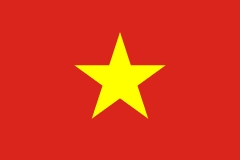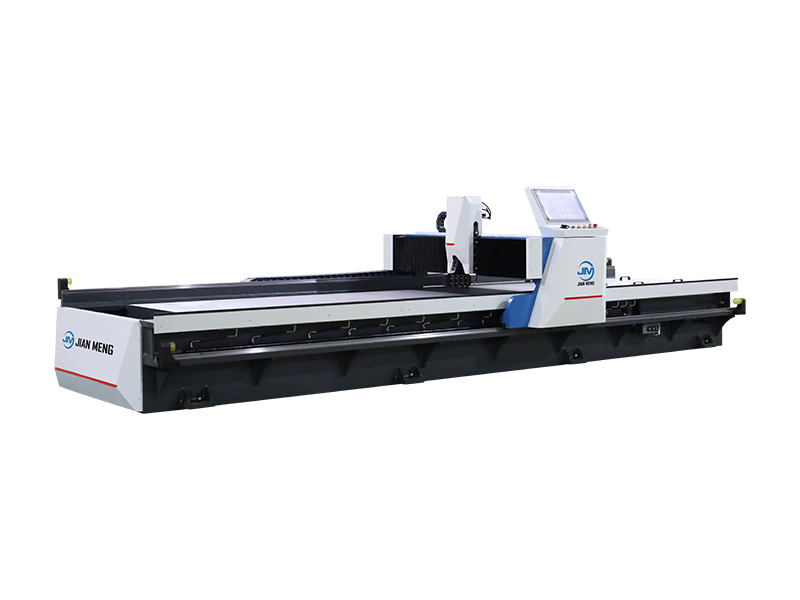Sheet metal shrinker stretchers are specialized contouring equipment designed for precision plastic deformation of sheet metal—enabling the creation of complex curves, radii, and compound shapes without material removal (cutting) or joining (welding). Unlike bending tools (which form linear angles) or English wheels (which stretch large flat surfaces), shrinker stretchers excel at localized, controlled deformation—making them indispensable for industries requiring tight-tolerance contouring, such as automotive restoration, aerospace subassembly, and custom metal fabrication. This technical overview breaks down their operating principles, equipment classification, applications, and best practices to establish a foundational understanding of their role in modern metalworking.
At their core, shrinker stretchers manipulate sheet metal via two complementary deformation mechanisms—compressive shrinking and tensile stretching—using interchangeable jaw assemblies. The process relies on localized force application to avoid global material failure (e.g., cracking, wrinkling) while preserving structural integrity.
1.1 Shrinking Mechanism
Shrinking reduces the sheet metal’s cross-sectional area and surface length via controlled plastic compression:
- Jaw Design: Shrinker jaws feature serrated or grooved surfaces (to grip metal without slippage) and a tapered profile that concentrates force on a narrow material strip (typically 5–15 mm wide).
- Force Application: When activated, jaws clamp the metal and draw it inward, compressing the material along the contour line. This shortens the metal’s length, causing it to curve outward (e.g., forming a convex radius on a car fender).
- Material Limits: Effective for ductile metals (e.g., low-carbon steel 1018, aluminum 3003) with elongation values >15%; unsuitable for brittle alloys (e.g., cast iron, high-carbon steel >0.8% C) due to cracking risk.
1.2 Stretching Mechanism
Stretching increases the sheet metal’s surface area and length via localized tensile force:
- Jaw Design: Stretcher jaws use a broader, smoother contact surface (to distribute force evenly) and a cam-driven mechanism that pulls the metal outward as jaws open.
- Force Application: Jaws grip the metal and expand laterally, stretching the material along the contour line. This lengthens the metal’s length, causing it to curve inward (e.g., forming a concave radius on an aircraft cowl panel).
- Key Consideration: Stretching must be incremental (1–2 mm per pass) to avoid necking (localized thinning >20%), which weakens the material.
2. Classification of Shrinker Stretchers
Equipment is categorized by power source and jaw configuration, each tailored to specific workloads, material thicknesses, and precision requirements.
2.1 By Power Source
| Type | Operation Principle | Technical Specs | Ideal Applications |
|-------------------------|-----------------------------------------------------------------------------------------|-------------------------------------------------------------------------------------|-------------------------------------------------|
| Manual (Mechanical) | Lever-driven (mechanical advantage: 15:1 to 25:1) to generate clamping force. | Max material thickness: 1.2 mm (steel), 2 mm (aluminum); Force output: 2–5 kN. | Hobby projects, small-batch custom work, repairs. |
| Pneumatic | Compressed air (0.6–0.8 MPa) drives a piston to actuate jaws; adjustable pressure. | Max material thickness: 3 mm (steel), 4 mm (aluminum); Force output: 8–15 kN. | Medium-volume fabrication (e.g., automotive shops). |
| Hydraulic | Hydraulic cylinder (10–30 MPa) delivers high, consistent force; pressure-regulated. | Max material thickness: 6 mm (steel), 8 mm (aluminum); Force output: 20–50 kN. | Heavy-duty industrial use (e.g., aerospace subassemblies). |
2.2 By Jaw Configuration
Jaw design dictates the tool’s ability to handle different material sizes and contour types:
- Standard Jaws: 25–50 mm wide; for general-purpose contouring (e.g., 90° radii on sheet metal brackets).
- Deep-Throat Jaws: 75–150 mm throat depth; for shaping large sheets or accessing hard-to-reach areas (e.g., inner fender wells).
- Radius-Specific Jaws: Pre-shaped to create fixed radii (e.g., R=10 mm, R=25 mm); eliminates trial-and-error for repetitive parts.
- Interchangeable Jaw Sets: Quick-change (1–2 minute swap) between shrinker/stretcher jaws; ideal for mixed-contour projects (e.g., combining convex/concave curves on a single part).
3. Core Industrial Applications
Shrinker stretchers are valued for their ability to produce non-linear, tight-tolerance shapes that other tools cannot achieve efficiently. Below are their most critical use cases, with technical requirements:
3.1 Automotive Restoration & Customization
- Tasks: Shaping fender flares, door skins, and hood contours; repairing rust-damaged panels (e.g., restoring 1960s muscle cars).
- Technical Requirements: Tolerance ±0.5 mm for panel alignment; compatibility with mild steel (18–22 gauge) and aluminum (16–18 gauge).
- Example: Using a pneumatic shrinker with deep-throat jaws to form a 30° convex curve on a 1.5 mm steel fender, ensuring alignment with the original chassis.
3.2 Aerospace Subassembly
- Tasks: Fabricating ductwork, cowl panels, and interior structural components (e.g., aircraft seat frames).
- Technical Requirements: Tolerance ±0.1 mm (per aerospace standard AS9100); compatibility with aluminum alloys (6061-T6, 2024-T3) and titanium (Ti-6Al-4V, thin-gauge).
- Example: Hydraulic stretchers with radius-specific jaws (R=15 mm) to form concave curves on 2 mm 6061-T6 aluminum ductwork, avoiding material thinning >5%.
3.3 Custom Metal Fabrication
- Tasks: Creating architectural elements (e.g., curved railings, decorative panels), industrial enclosures, and marine components (e.g., boat hull trim).
- Technical Requirements: Versatility across materials (steel, aluminum, copper); ability to handle variable thicknesses (0.8–4 mm).
- Example: Manual shrinker-stretcher with interchangeable jaws to shape 1 mm copper into a custom light fixture, combining convex and concave curves.
4. Technical Operation Best Practices
Achieving consistent, high-quality results requires adherence to process controls and material-specific techniques:
4.1 Pre-Operation Setup
1. Material Preparation:
- Deburr all edges (to prevent jaw damage); mark contour lines with a scribing tool (using a template for repeatability).
- Test a scrap piece of the same material/thickness to calibrate force (e.g., 5 kN for 1 mm aluminum, 12 kN for 3 mm steel).
2. Jaw Selection:
- Use serrated jaws for thick/soft metals (e.g., aluminum) to prevent slippage; smooth jaws for thin/hard metals (e.g., stainless steel) to avoid surface marring.
- Align jaws parallel to the contour line (±1°) to ensure uniform deformation.
4.2 In-Process Controls
1. Incremental Deformation:
- Apply 1–2 mm of shrinkage/stretching per pass; avoid over-deforming (e.g., shrinking >5 mm in one pass causes wrinkling).
- Rotate the part 5–10° between passes for compound curves (e.g., a “S” shape), ensuring force is distributed evenly.
2. Defect Correction:
- Wrinkling (shrinking): Reduce jaw overlap by 20% and apply lighter force; stretch adjacent areas to redistribute material.
- Necking (stretching): Reduce force by 30% and use shorter passes; shrink the opposite side to restore thickness.
4.3 Post-Operation Inspection
- Measure contour accuracy with a radius gauge or coordinate measuring machine (CMM) to verify tolerance compliance.
- Check for material defects (e.g., cracks, thinning) using a thickness gauge (target: <10% thickness loss for structural parts).
5. Maintenance & Calibration Protocols
Prolonging equipment lifespan and ensuring consistent performance requires proactive maintenance:
5.1 Routine Maintenance (Per 50 Operating Hours)
- Cleaning: Remove metal shavings/debris from jaws using a wire brush; wipe down hydraulic/pneumatic lines to check for leaks.
- Lubrication: Apply lithium-based grease to pivot points (jaw hinges, lever connections); use pneumatic tool oil (ISO VG 32) for air-driven components.
5.2 Preventive Maintenance (Per 500 Operating Hours)
- Jaw Inspection: Check for tooth wear (replace jaws if teeth are flattened >30%); verify jaw alignment with a straightedge (adjust if misalignment >0.2 mm).
- Power System Service:
- Pneumatic: Replace air filters and check pressure regulators (calibrate to 0.7 MPa).
- Hydraulic: Change oil (ISO VG 46 hydraulic oil) and replace filters; test pressure relief valves (ensure they trigger at 110% of max rated force).
5.3 Calibration (Quarterly)
- Use a force gauge to verify output (e.g., ensure a 10 kN hydraulic stretcher delivers 9.5–10.5 kN); adjust pressure regulators if off-spec.
- Calibrate jaw parallelism using a feeler gauge (gap <0.05 mm between jaws at full closure).
6. Equipment Selection Criteria
When choosing a shrinker stretcher, align specifications with your application’s technical needs:
1. Material Thickness & Type: Select a model with force output matching your max material (e.g., 15 kN for 3 mm steel, 5 kN for 1 mm aluminum).
2. Precision Requirements: Manual models for ±1 mm tolerance; pneumatic/hydraulic for ±0.1–0.5 mm.
3. Production Volume: Manual for <10 parts/week; pneumatic for 10–50 parts/week; hydraulic for >50 parts/week.
4. Workspace Constraints: Manual models (weight: 5–15 kg) for benchtop use; pneumatic/hydraulic (weight: 50–200 kg) for floor-mounted setups.


 English
English  中文
中文  Arabic
Arabic  Russian
Russian  Spanish
Spanish  Portuguese
Portuguese  French
French  German
German  Hindi
Hindi  Thai
Thai  Vietnamese
Vietnamese  Khmer
Khmer  Italian
Italian  Turkish
Turkish  Korean
Korean  Belarusian
Belarusian 





